Skillet steak dinner is more than just a meal; it’s an experience in flavors and ease. Imagine the sizzle of steaks hitting the hot skillet, the aroma of spices mingling in the air, and the vibrant colors of fresh vegetables on your plate. This dish is a perfect blend of the rich, robust flavors of New York steaks, complemented by the subtle spices and the freshness of mushrooms and asparagus. What sets this dinner apart is its simplicity and versatility. Whether it’s a busy weeknight or a special family gathering, this one-pan wonder is sure to impress. The beauty of this dish lies in its straightforward preparation, making it accessible to cooks of all levels while still providing a touch of elegance.
Why You’ll Love Skillet Steak
- Effortless Preparation: One pan means less mess and easy cleanup.
- Full of Flavor: Perfectly seasoned steaks with a hint of garlic and onion.
- Versatility: Easily adaptable with different vegetables or seasonings.
- Family-Friendly: Sure to be a hit with both kids and adults.
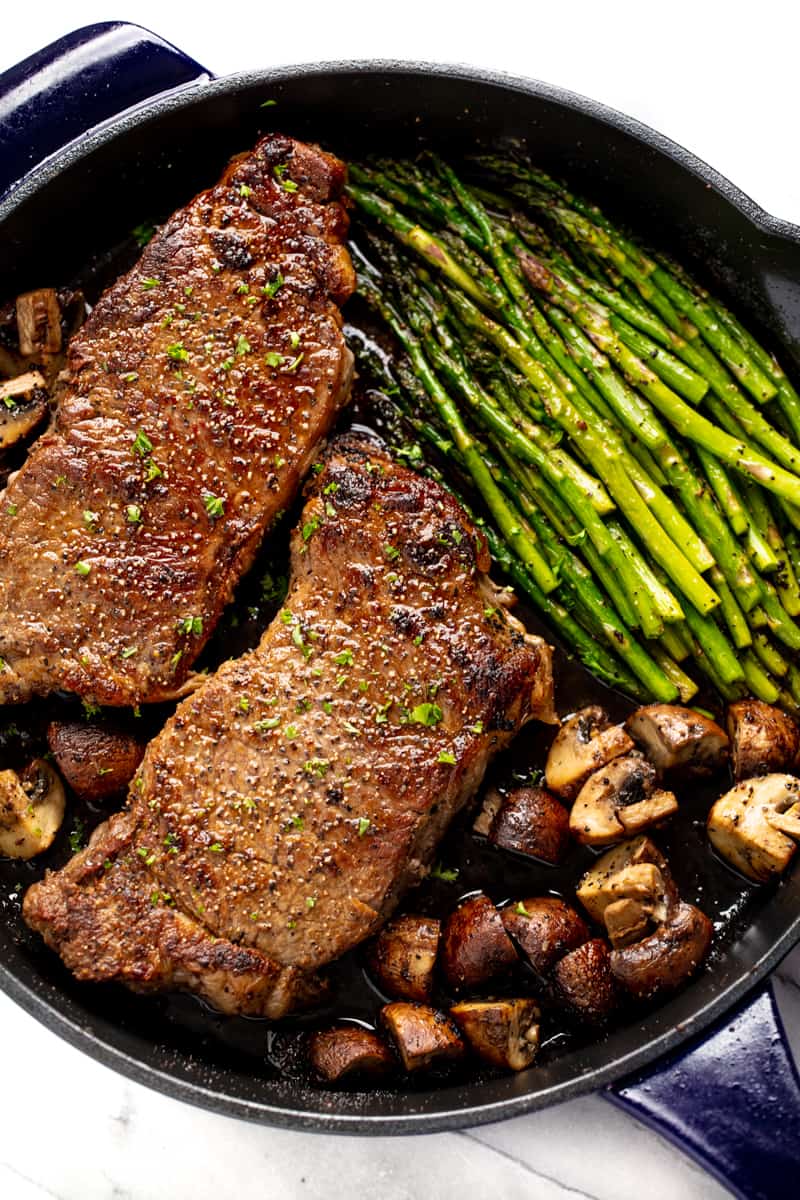
Skillet Steak Ingredients & Substitutions
Whether you’re adapting to dietary preferences or just experimenting with what’s in your pantry, use this guide to ensure your steak dinner is both delicious and tailored to your needs.
- New York Steaks: The centerpiece of the dish, known for their flavor and tenderness.
- Substitutions: Ribeye or sirloin steaks can be used for a similar texture and taste. For a leaner option, try flank or filet mignon.
- White Pepper: Adds a distinct, slightly milder heat than black pepper.
- Substitutions: Black pepper, ground green peppercorns, or a pinch of cayenne for a different kind of heat.
- Onion Powder and Garlic Powder: Provide depth and a hint of sweetness.
- Substitutions: Fresh minced garlic and finely chopped onion can be used for a more robust flavor.
- Vegetable Oil: Used for searing the steaks, it has a high smoke point.
- Substitutions: Canola oil, grapeseed oil, or avocado oil are excellent alternatives with similar smoke points.
- Butter: Adds richness and helps in browning.
- Substitutions: For a dairy-free option, use a plant-based butter. Olive oil can also be used for a different flavor profile.
- Mushrooms: Add earthiness and absorb flavors well.
- Substitutions: Bell peppers for a sweeter taste or zucchini for a lighter option.
- Asparagus: Provides a fresh, slightly grassy flavor and a crisp texture.
- Substitutions: Green beans or broccoli florets can be used for a similar crunch. Carrots or snap peas offer a sweet and crunchy alternative.
Frequently Asked Questions
You can season the steaks and prep the veggies in advance.
Yes! If you do not own a cast iron or oven-safe skillet you can still make this recipe, but it will require more dishes and a little bit more time. Sear the steaks and the vegetables in a skillet, just as the recipes call for. Then transfer all the ingredients to an oven-safe dish (like a sheet pan) to finish cooking in the oven.
Use a meat thermometer to check for your preferred level of doneness.
To get the best mouth-watering steak it is recommended to cook your steak to medium rare, but we also understand that many people prefer a well-done steak. To get a well-done steak cook the steak until the internal temperature reads 150 degrees F.
Choosing & Adjusting for Different Cuts of Steak
While this recipe calls for New York steaks, you can easily adapt it to other popular cuts like ribeye, filet mignon, and sirloin.
Different Cuts of Steak
- Ribeye: Known for its marbling and rich flavor. Ribeye steaks are tender and juicy, making them a favorite for many.
- Filet Mignon: The most tender of steaks, filet mignon is lean with a mild flavor. It’s a great option for those who prefer a softer texture.
- Sirloin: A leaner cut, sirloin offers a good balance of flavor and tenderness without too much fat.
Adjusting the Recipe
- Cooking Time: Different cuts will require adjustments in cooking time. Ribeyes and sirloins, being thicker, may need more time on the skillet and in the oven compared to the more delicate filet mignon.
- Temperature Check: Always use a meat thermometer to check for doneness, as different cuts reach their ideal temperatures differently. For medium-rare, aim for an internal temperature of about 130°F.
- Pan Size: Ensure the steaks fit comfortably in your pan. Overcrowding can lead to uneven cooking. If necessary, cook the steaks in batches.
Choosing the Best Steak
- Thickness: Look for steaks that are at least 1 to 2 inches thick. This allows for a good sear on the outside while keeping the inside juicy.
- Marbling: Visible fat marbling is a sign of flavor. More marbling usually means a juicier, more flavorful steak.
- Freshness: Fresh steaks should have a bright, cherry-red color. Avoid steaks that look dull or have a grayish hue.
- Uniformity: Choose steaks that are uniform in thickness to ensure even cooking.
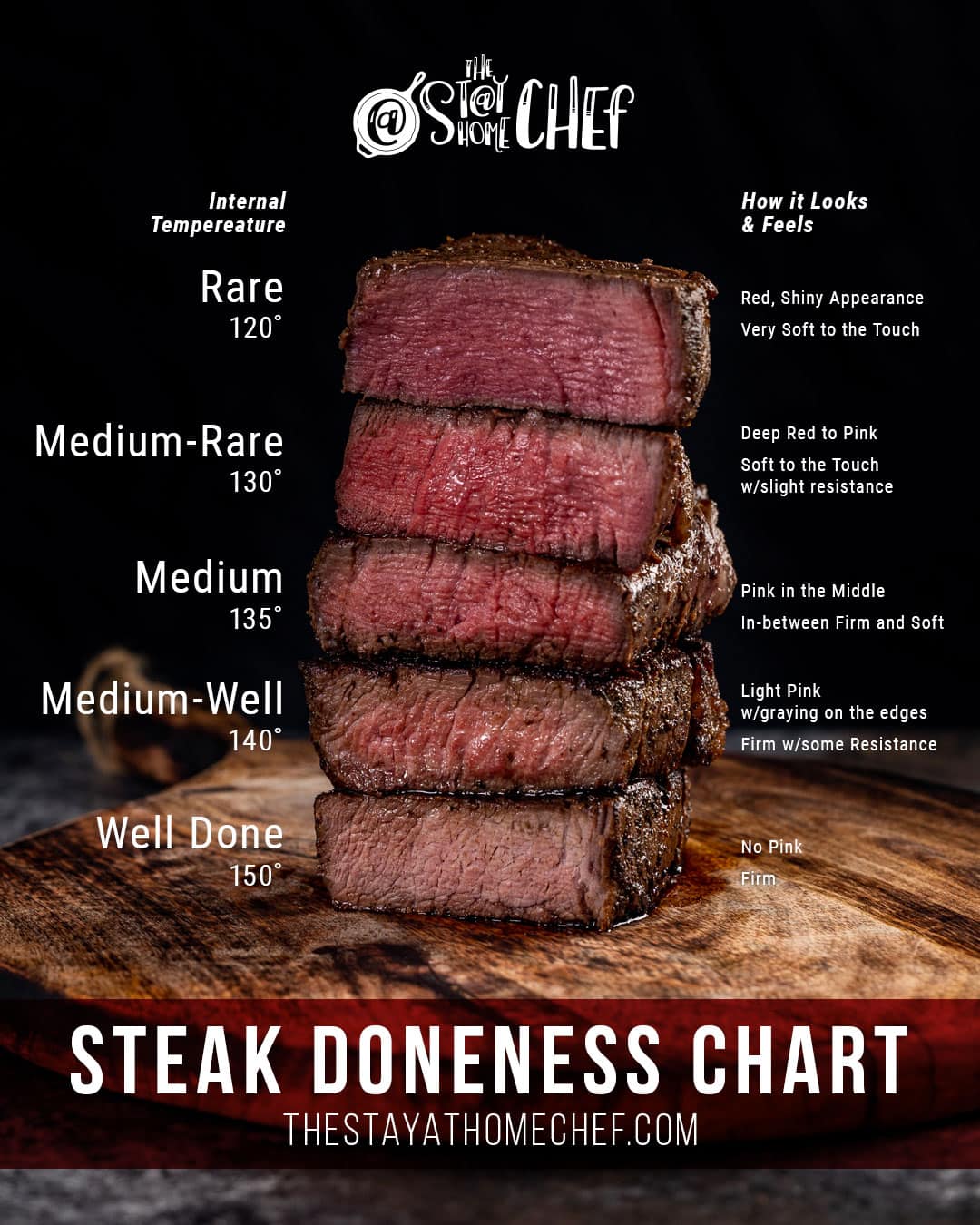
What to Serve With Skillet Steak
Skillet steak dinner is a versatile dish that shines as the centerpiece of your dining table. To make this a complete meal, consider pairing it with classic sides that complement the rich flavors of the steak. Fluffy mashed potatoes or a creamy risotto can act as a delightful canvas for the steak’s juices, while a crisp green salad or green beans add a refreshing contrast. For a heartier option, roasted vegetables like carrots or brussel sprouts bring a touch of sweetness and depth. Don’t forget a loaf of crusty bread to mop up any delicious remnants on the plate. This array of sides not only balances the meal but also caters to a range of tastes, making skillet steak dinner an ideal choice for family gatherings, intimate dinners, or even a casual weekend treat.
Troubleshooting
- Steak not searing properly? Ensure your skillet is hot enough before adding the steaks.
- Vegetables overcooking? Add them to the skillet after the steaks have partially cooked.
- Steak too tough? Avoid overcooking and let it rest for a few minutes before slicing.
Tips From the Chef
- Let your steaks reach room temperature before cooking.
- Use a heavy skillet for even heat distribution.
- Don’t overcrowd the pan; cook in batches if necessary.
- Rest the steak after cooking for juicier steak.
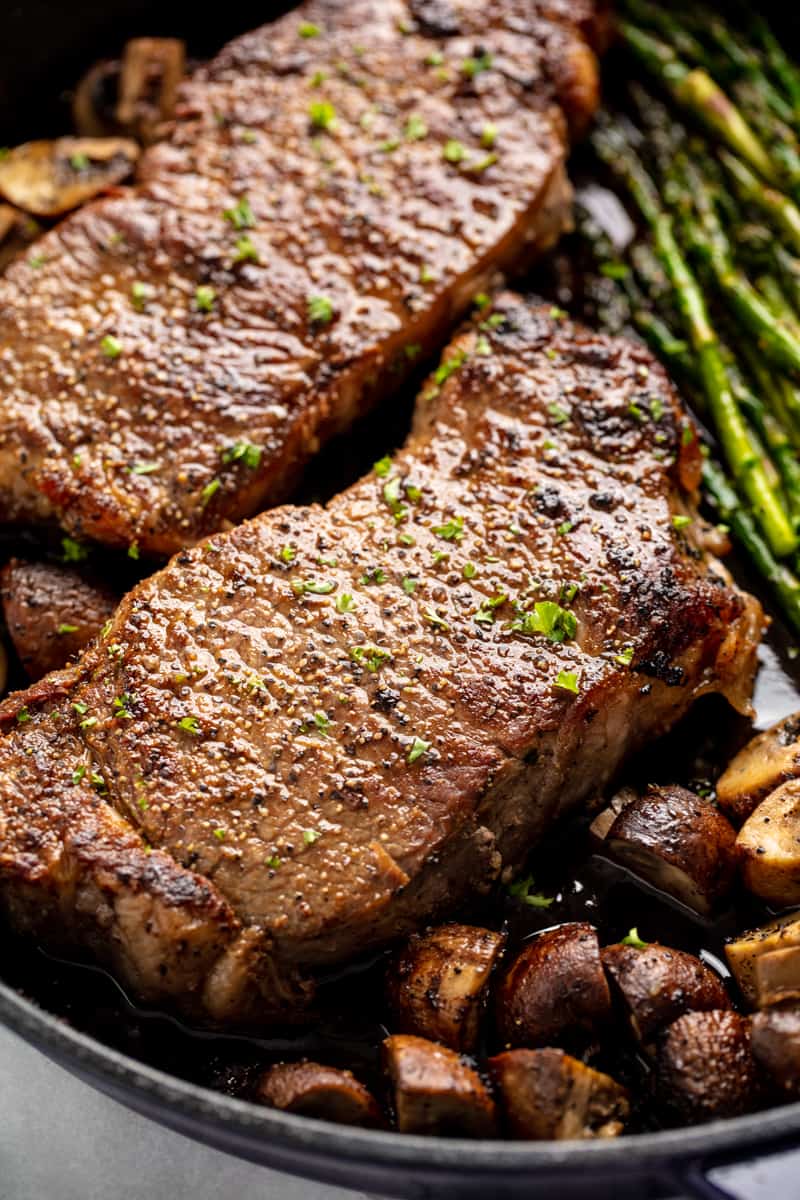
Storage & Reheating Instructions
Storage
- Refrigerator: Place any leftover steak and vegetables in an airtight container. Store them in the refrigerator for up to 3 days. Ensure the container is sealed properly to prevent any air exposure, which can lead to spoilage and drying out.
Freezing
- Steak: To freeze the cooked steak, wrap it tightly in plastic wrap or aluminum foil, then place it in a freezer-safe bag or container. Label the container with the date to keep track of how long it’s been stored. The steak can be frozen for up to 3 months.
- Vegetables: While the mushrooms and asparagus may lose some of their textures upon freezing, they can still be frozen. Cool them completely, then store them in a freezer-safe bag or container, separated from the steak. They can also be stored for up to 3 months.
Reheating
- Refrigerated Steak: For the best results, let the steak come to room temperature for about 15-20 minutes before reheating. Reheat it gently in a skillet over medium heat, adding a splash of water or broth to keep it moist. Cover the skillet to trap the steam, and heat until just warmed through. Avoid overcooking to maintain tenderness.
- Refrigerated Vegetables: Reheat the vegetables in a skillet over medium heat until they are heated through. You can also reheat them in the microwave for 1-2 minutes, stirring halfway through.
- Frozen Steak and Vegetables: Thaw them in the refrigerator overnight before reheating. Once thawed, follow the same reheating instructions as for refrigerated leftovers. If reheating from frozen, use a lower heat and a longer time, either in a skillet or in the oven, to ensure even warming without overcooking.
Following these storage and reheating guidelines will help ensure that your skillet steak dinner remains delicious and safe to consume, even after a few days. Remember, when reheating, the goal is to warm the food thoroughly without cooking it further, to retain its flavor and texture.

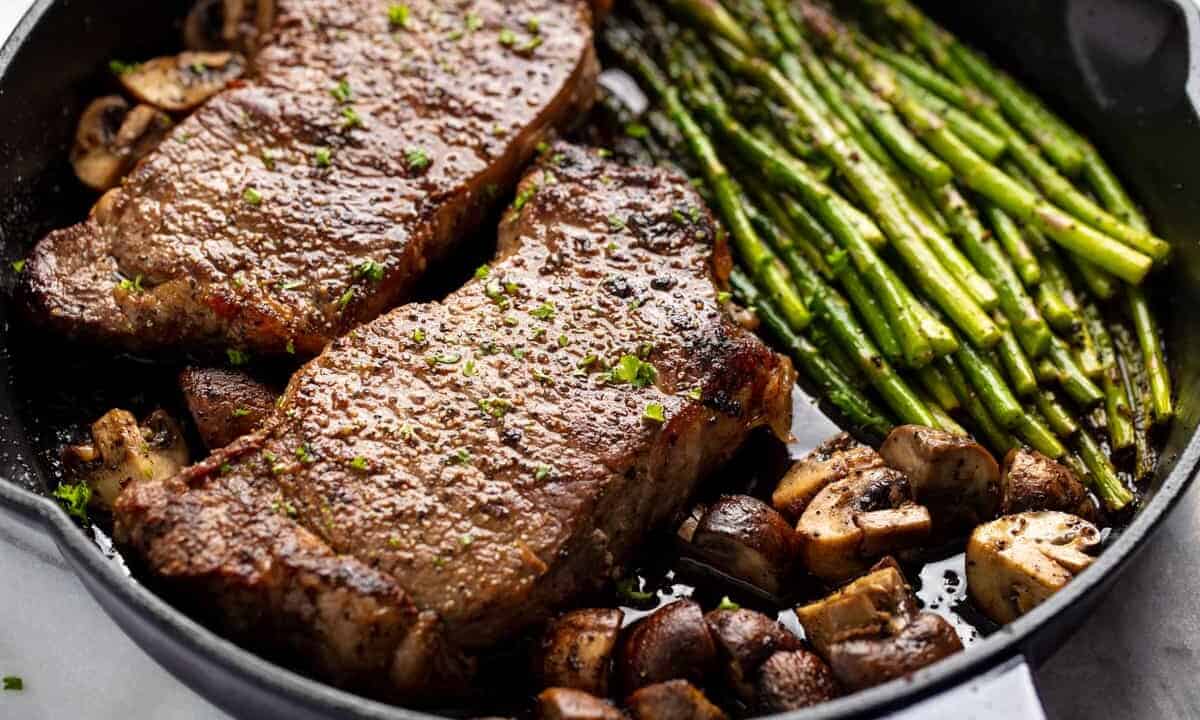
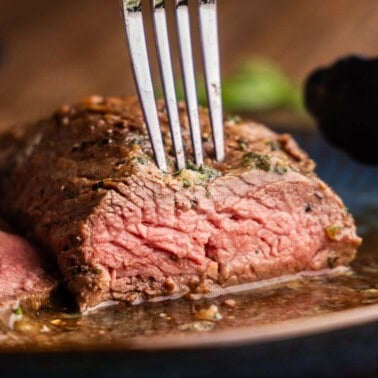
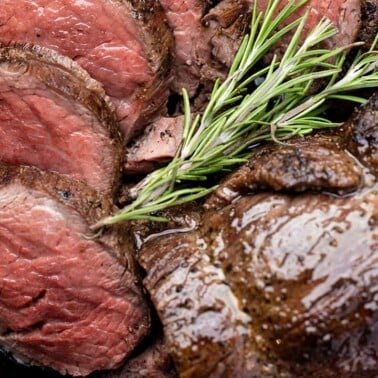
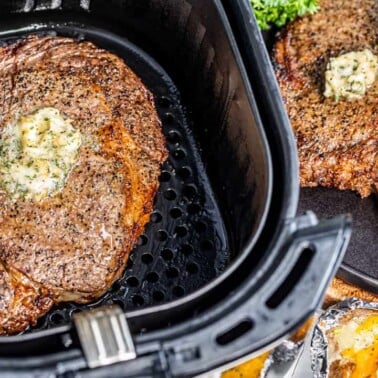
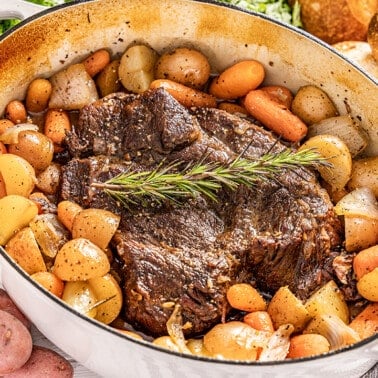
Great recipe. I just love it, ultimate steak dinner
Wow, wow, wow! Absolutely delicious. I told my husband it was like he had taken me out to dinner at a 5-star restaurant. He bought two New York steaks 2 inches thick (prime) and they cost a pretty penny. May I please mention that next time we make this I will make a Bearnaise sauce for the steak as well as add rings of onion sauteed with the mushrooms and asparagus?
Oh man, I just made these for Christmas dinner. Amazing flavour and I concur that ribeye steak works well with this recipe as well. So much flavour and so tender! The mushrooms and asparagus are perfect companions to the taste. Thank you for this recipe, it may become our new traditional dinner.
This looks amazing. I just got a cast iron skillet and someone suggested I try pan seared steak and I remembered seeing this on and I love your other recipes that I’ve tried.
I was wondering if I can substitute the mushrooms for home fried potatoes or something g similar. We aren’t fans of mushrooms. Or would I need to cook those separately?
Thanks
Scott
You can definitely omit the mushrooms. I would cook the potatoes separately. Good luck!
I love mushrooms. But I added in baby potatoes cut in half. Delish
Good idea as I would like those also. Thanks
I made this Skillet Steak Dinner for my husband and daughter for our Valentine’s Day dinner and they LOVED it! My husband told me that it was the most tender steak he had ever eaten (I used beef steak sirloin). He said the asparagus and the mushrooms were full of flavor and that the whole dinner was better than what he has ever eaten at any restaurant! I also paired baked potatoes and Hawaiian rolls with the dinner and carrot mug cakes for dessert, (hubby’s favorite cake). Thank you Rachel, for making my Valentine’s Day dinner a success with this wonderful recipe! XXXOOO 🙂
This meal looked so amazing and easy, I just had to try it. Made this dinner tonight for my husband and I and it was so good, so easy, and clean up took 5 minutes! Steak came out perfect! Added a baked sweet potato! Great meal!
Looking forward to trying this. My sister has a Dairy Farm along with cattle and she is sending me some NY Steaks and Sirloins. Yum Yum
I prepared our Rib Eye Steaks last evening just like this and they were delicious. I know this would be as well. So flavorful. Thanks for the tip on how to cook a good flavorful steak……Priscilla
The steak, asparagus & mushroom skillet dinner looked delightful & super easy. So glad I ran across your video. Is there an oven friendly skillet you prefer? Thank you.
I generally use any cast iron skillet.
I made it today it was so good 👍
Luv this!! You have the best recipes!